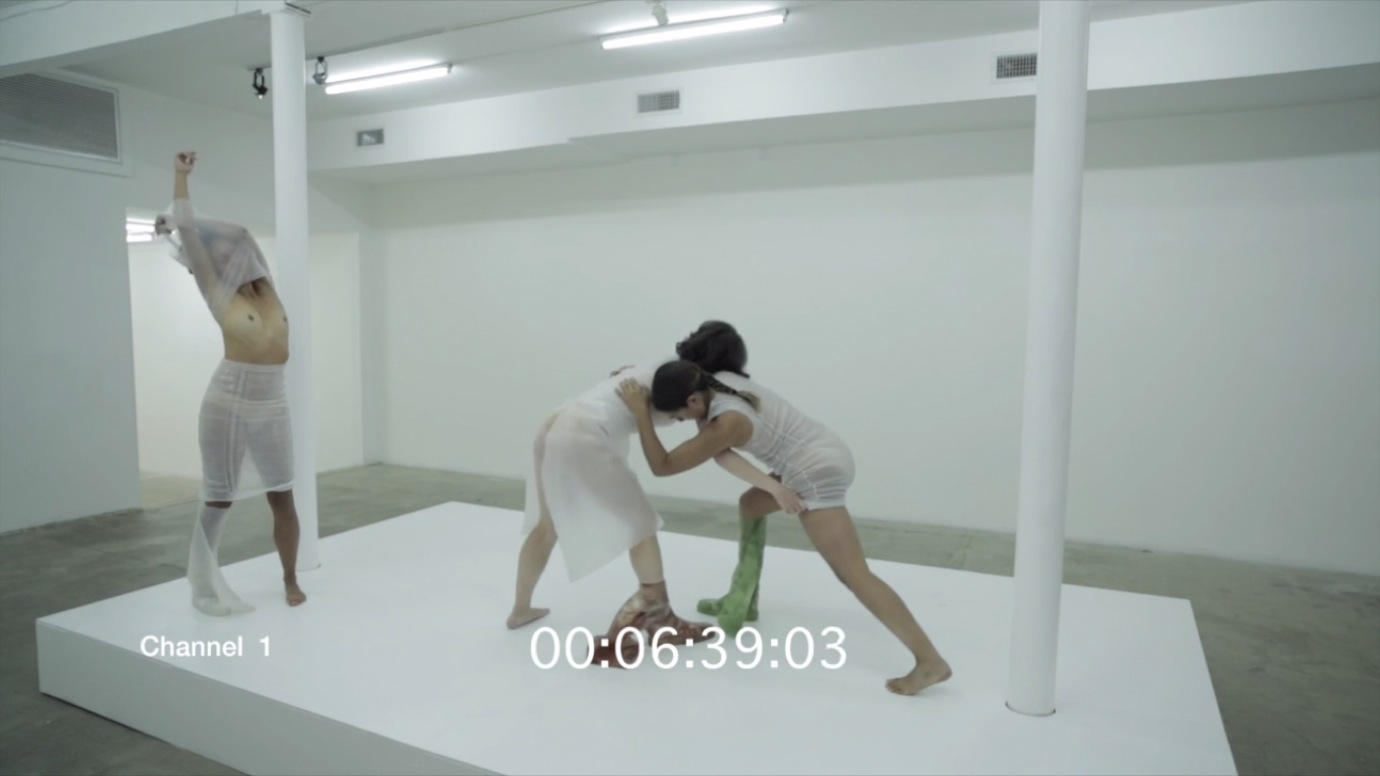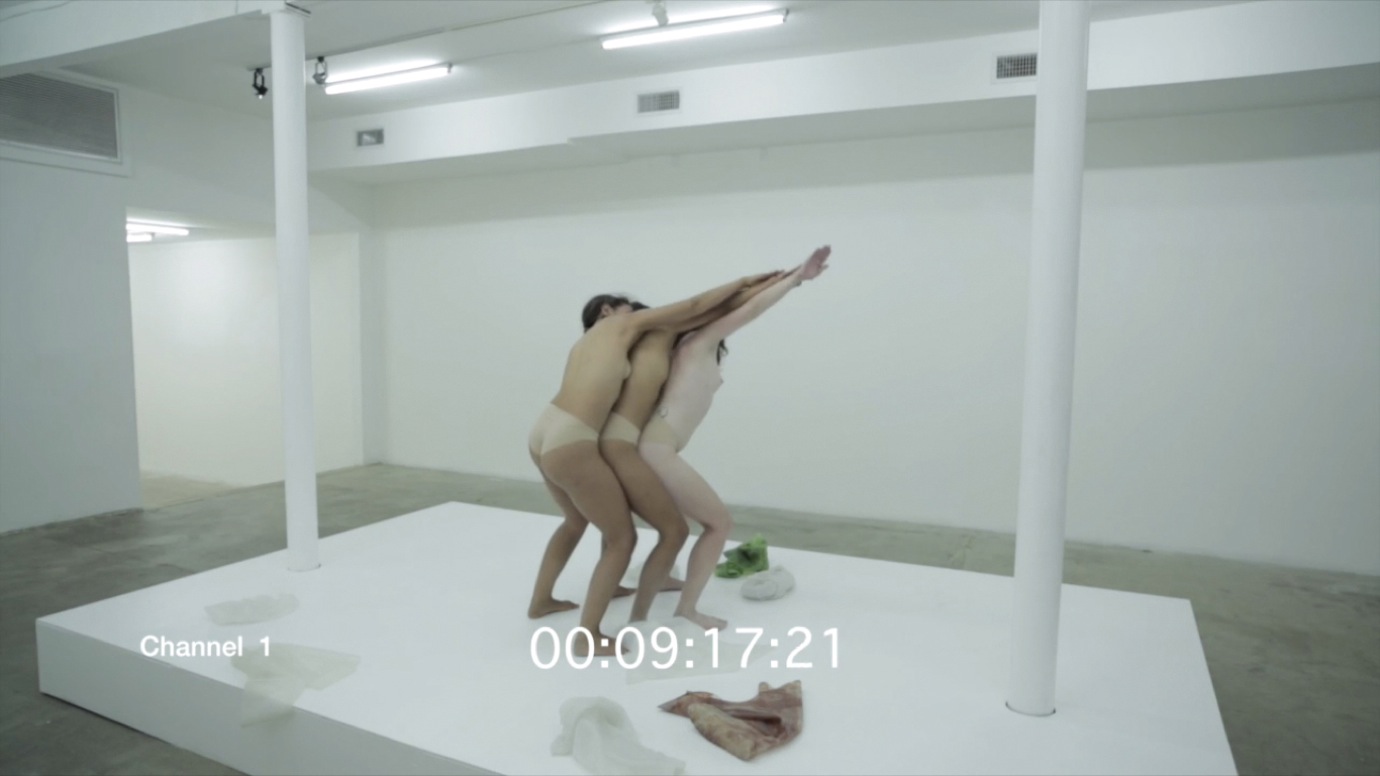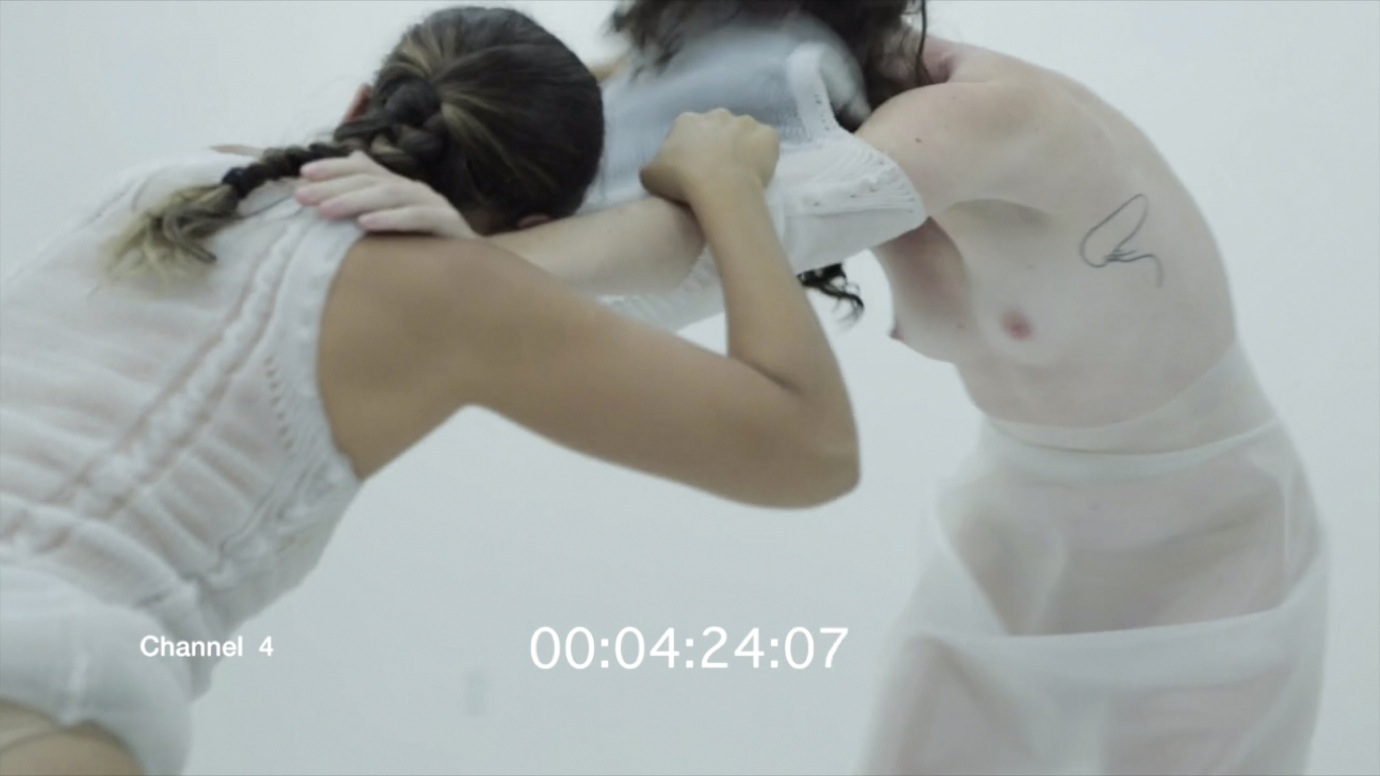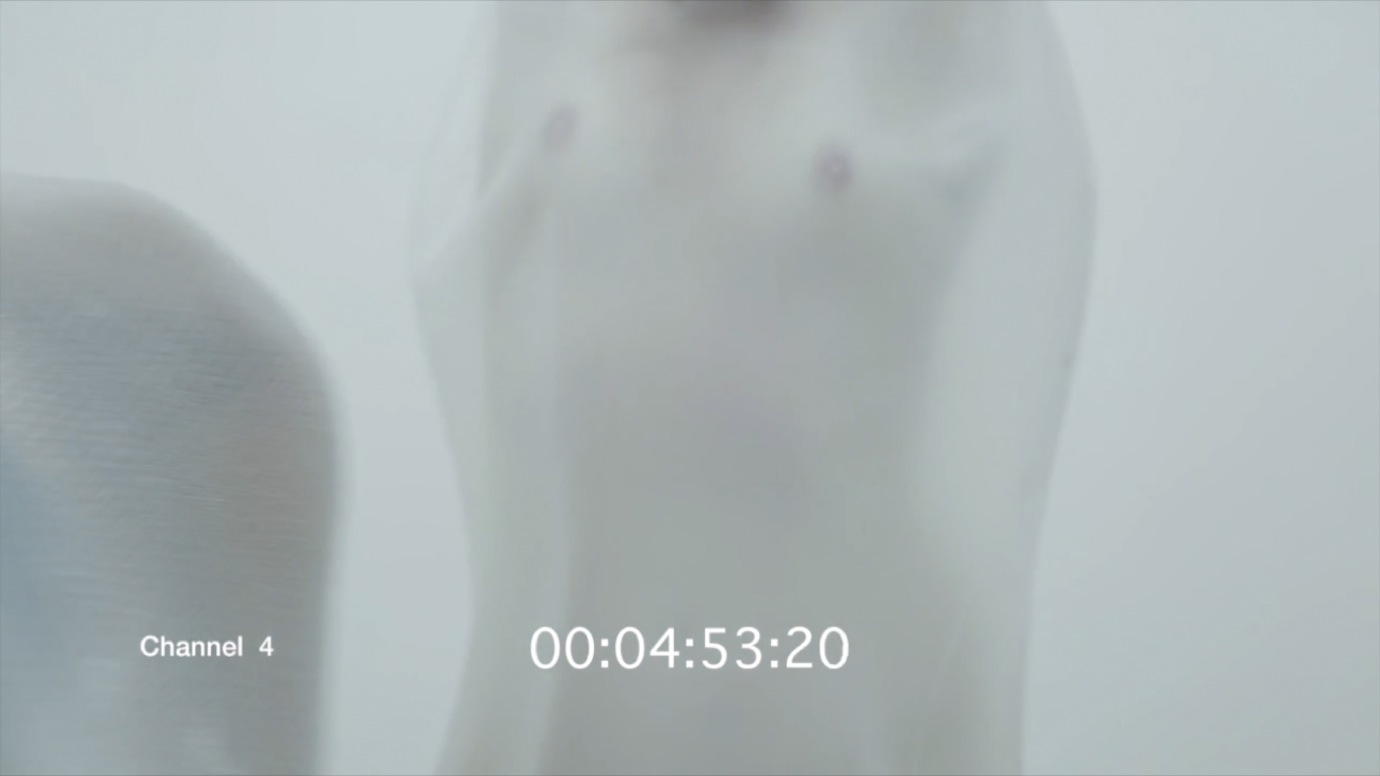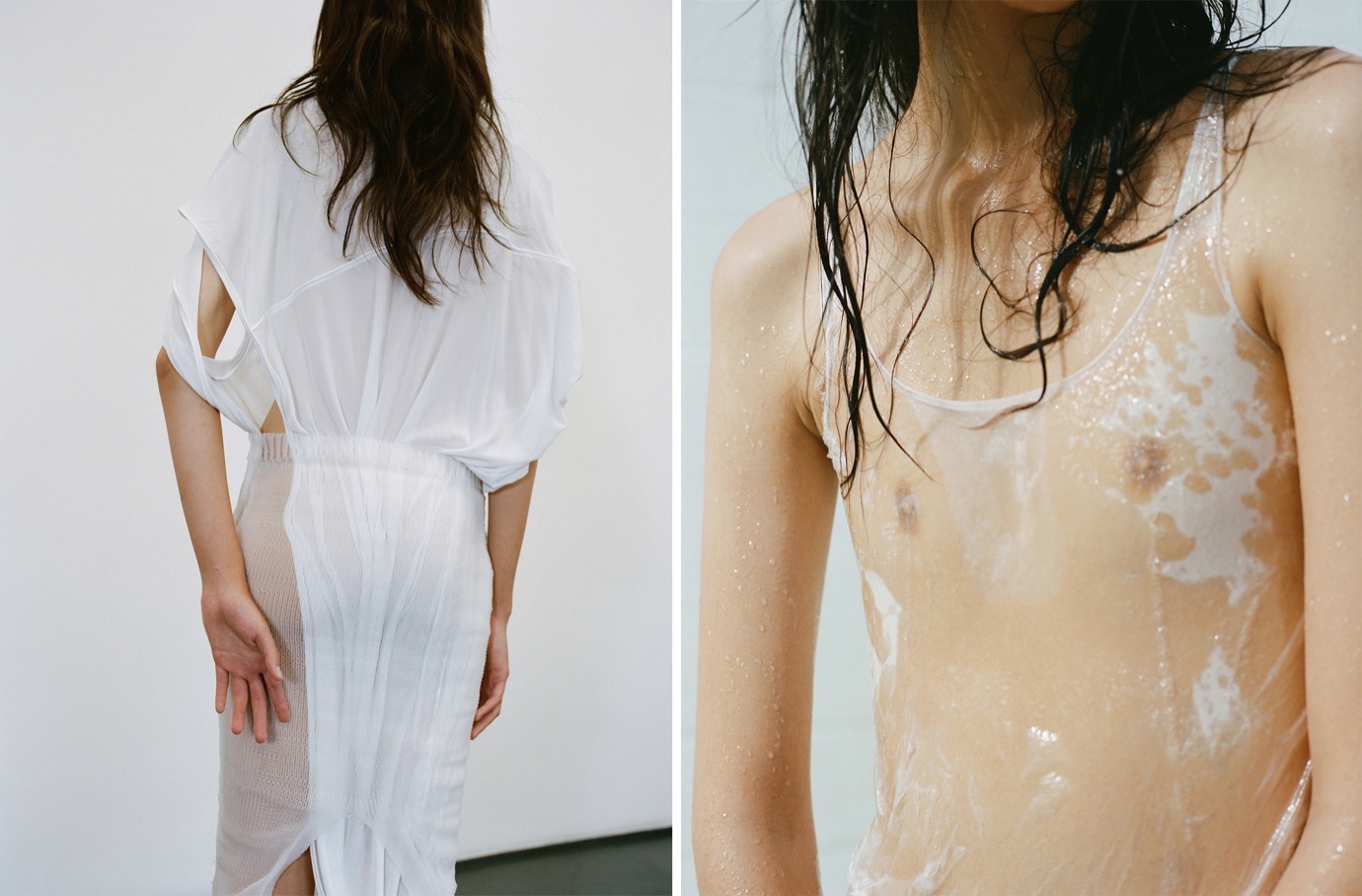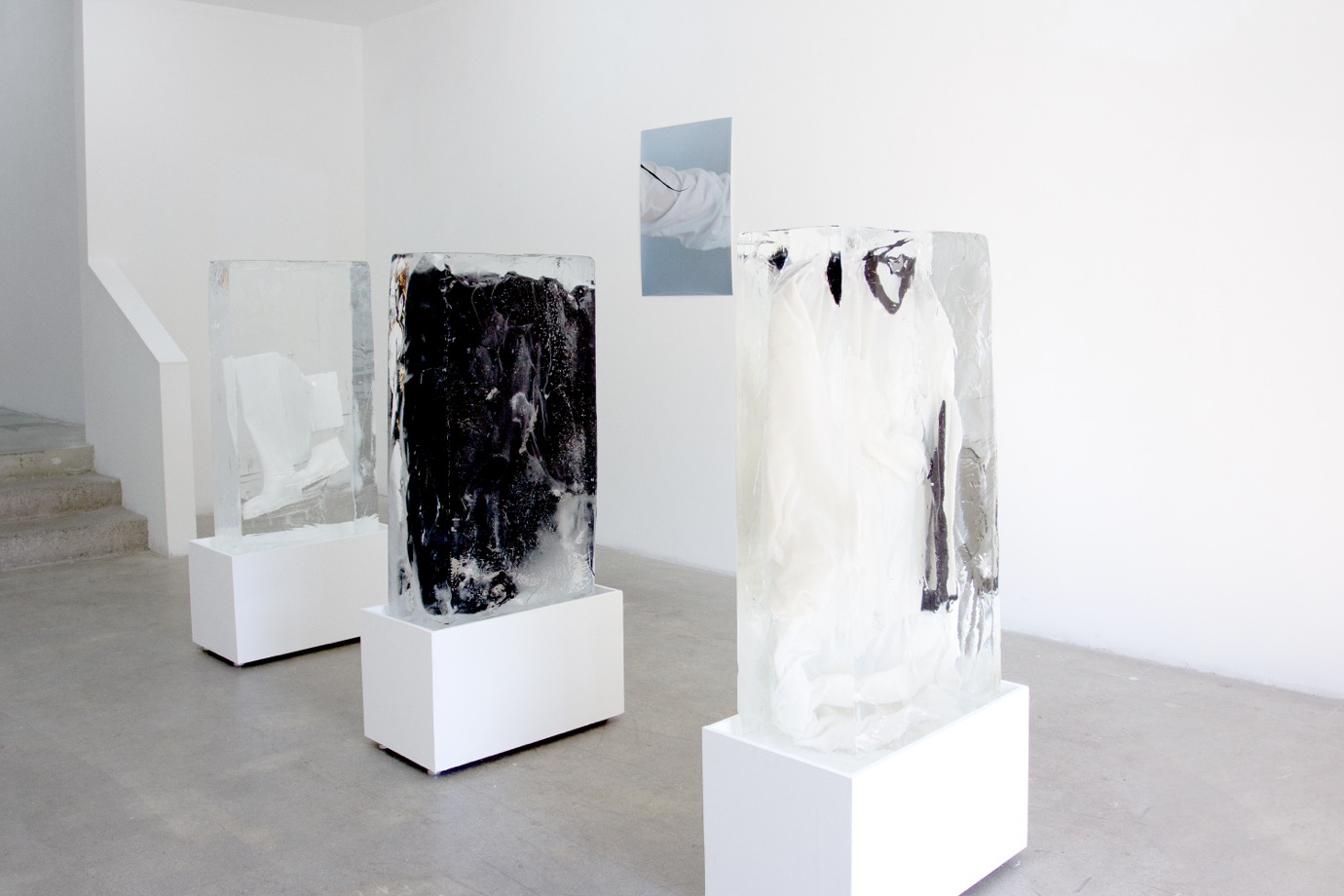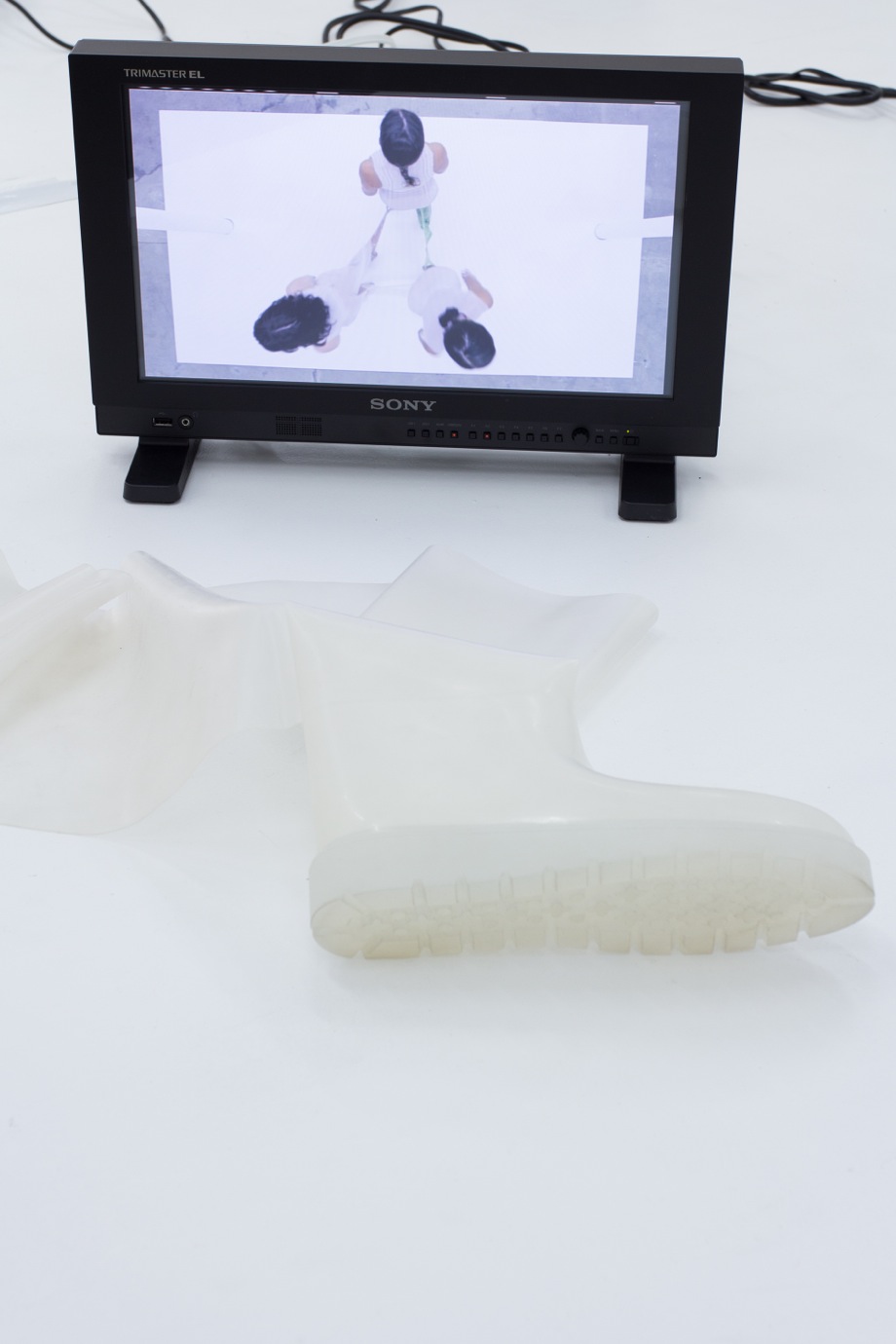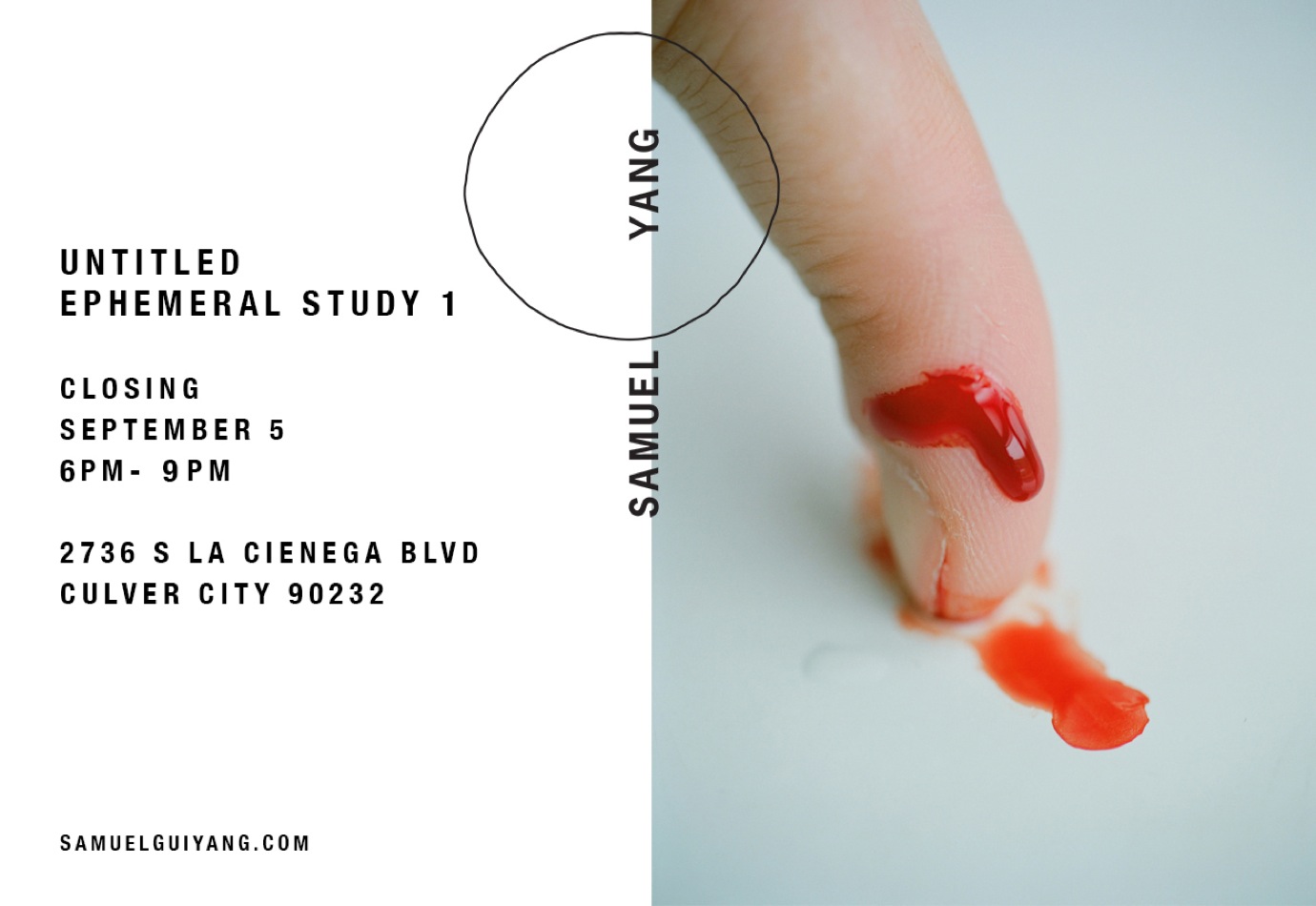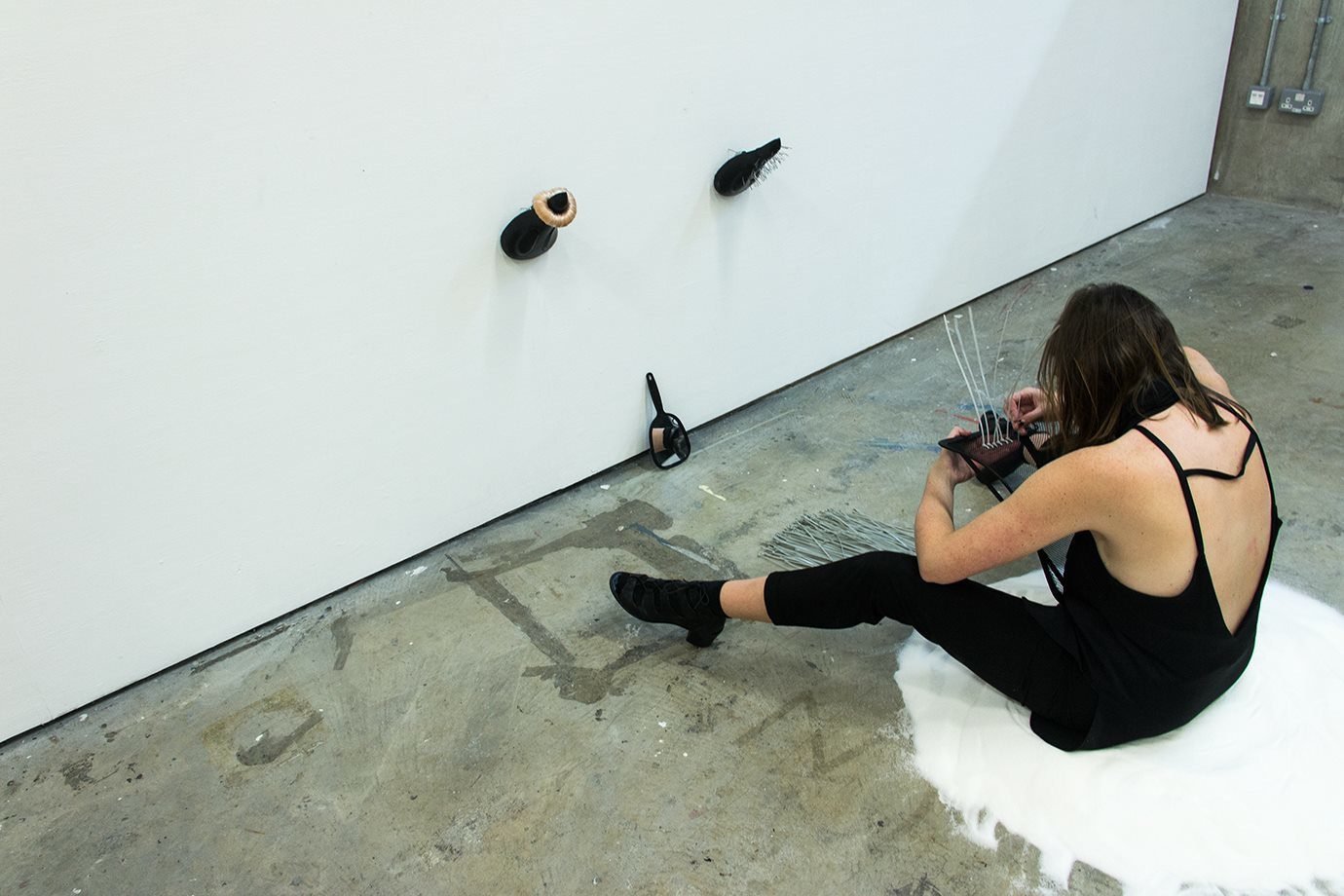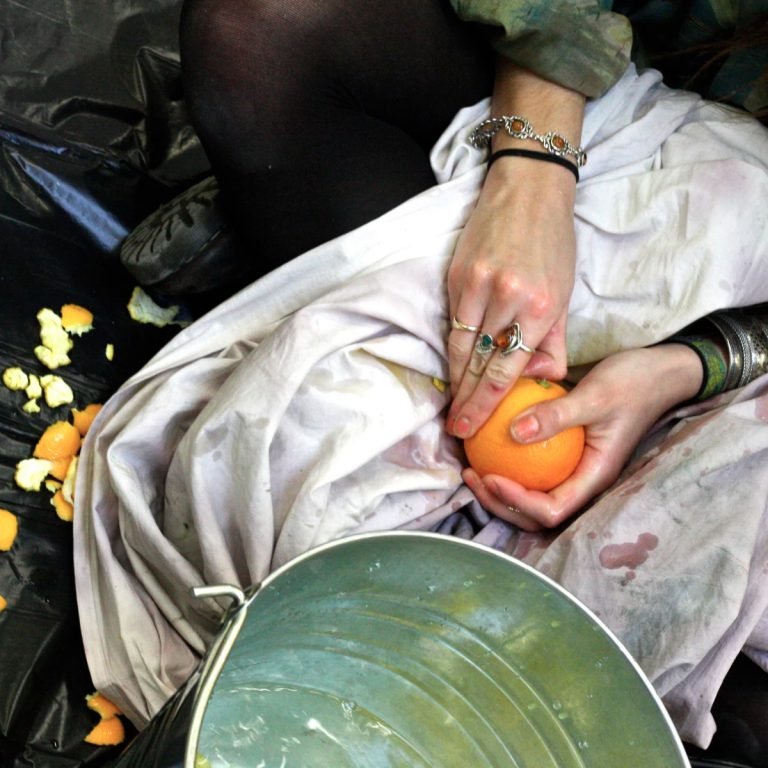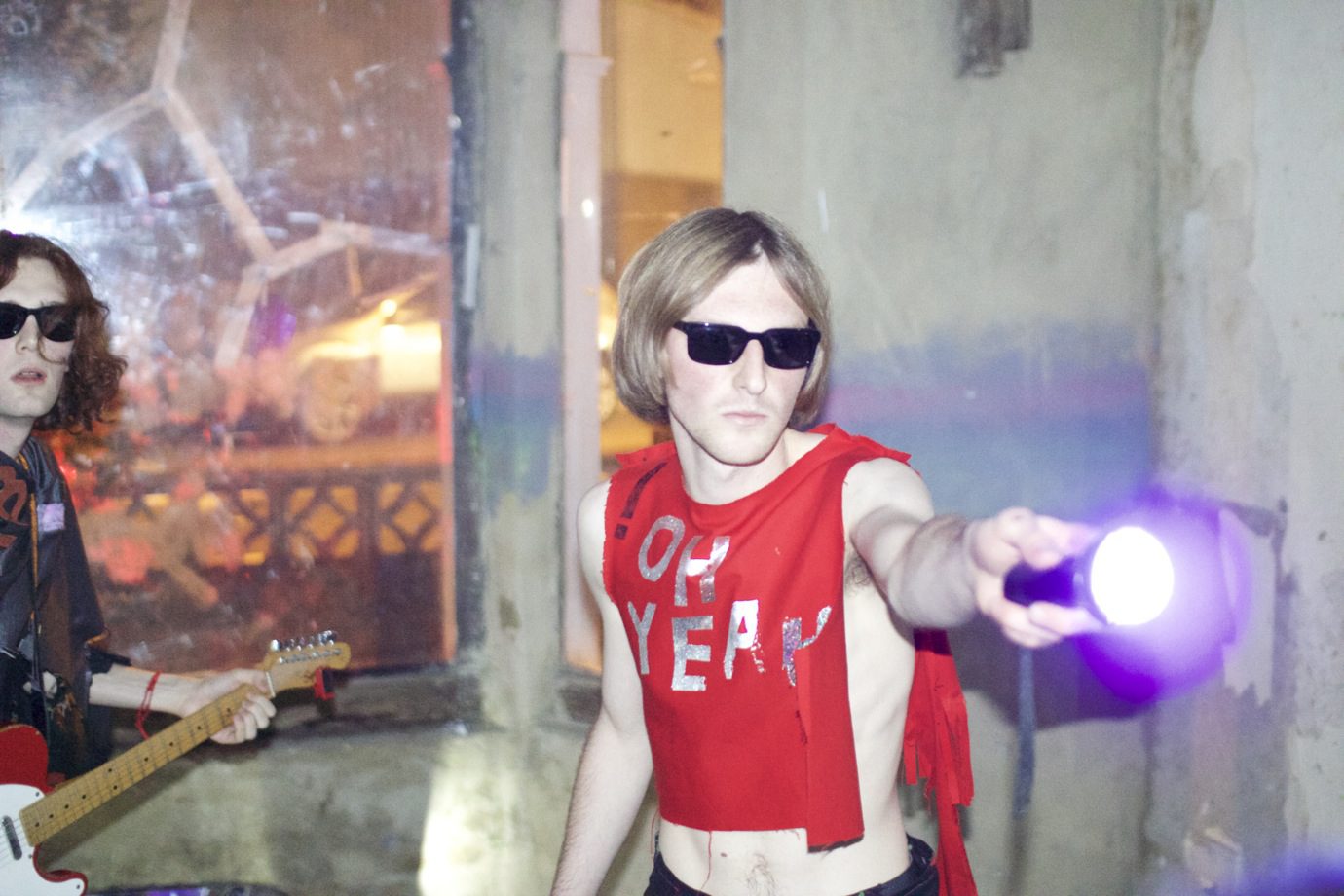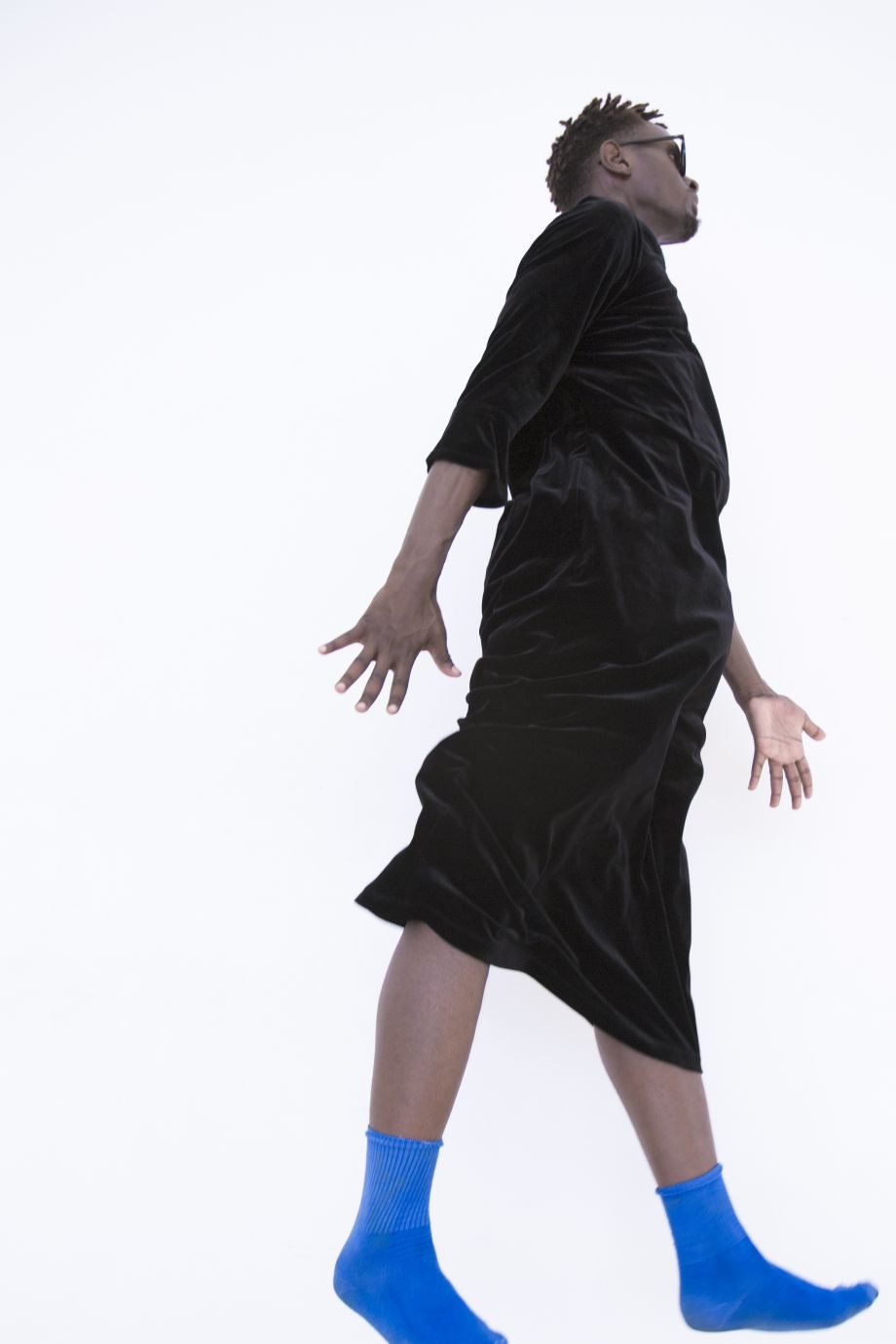Samuel Gui Yang is clearly nervous as he picks up the phone from a gallery in downtown LA a few days before the opening of his show. Not to speak with us of course, but rather due to the immense amount of work that needs to be done before his big launch on the coming Saturday. “It’s the first one, so of course I’m nervous,” he laughs restlessly, “but it’s not like I have a choice now – it’s going to go ahead anyway.”
Originally from Shenzhen on the Southern coast of China, Yang completed both a BA and MA in Fashion Design at Central Saint Martins. Over the course of his education, he developed a distinct approach to his design process, approaching fashion like an expanded creative practice that encompasses a variety of media, and resembling above else that of an art practice. Central to his work is a fascination for the human body, which manifests in his ambitious experiments with rubber and other materials that produce a certain tension on the body. “I try to see fashion differently; I’ve always wanted to take a different point of view, more artistic and more like an art form,” he reflects. “I always found it more inspiring to start making collections in that way.”
After graduating, Samuel went straight on to work on developing his practice – not in the conventional way of setting up a studio and founding a brand, but more to keep learning, experiencing and communicating with the creative scene around him. “I’d like to choose a city, go there for a week and a half, find a location and then set up a project collaborating with local people,” he summarises the strategy behind his project. “It’s a way of using multiple medias not just from fashion. For me, it’s all about expressing visual languages, also it’s a way to build up a community and meet people whom I find interesting and that I want to collaborate with.”
“I TRY TO SEE FASHION DIFFERENTLY; I’VE ALWAYS WANTED TO TAKE A DIFFERENT POINT OF VIEW”


